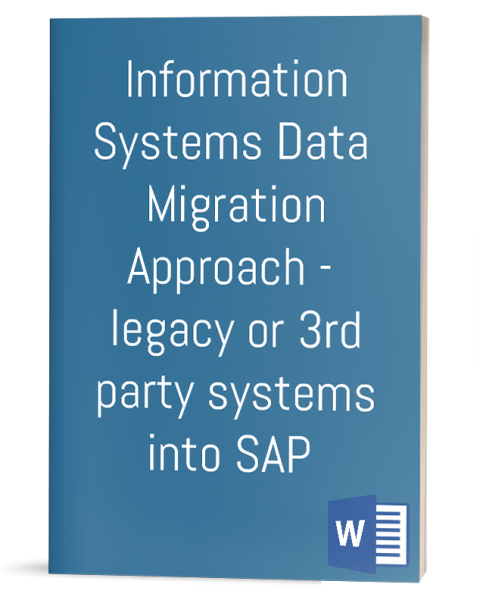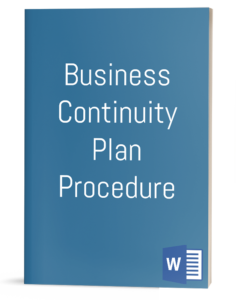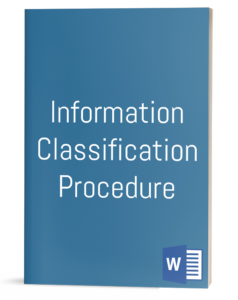
Information Systems Data Migration Approach – legacy or 3rd party systems into SAP
This document should be seen as a guideline which describes a good practice approach to migrating data from legacy or 3rd party systems into SAP. It reflects the expectations of the ERP Competence Center within the Company with respect to Data Migration activities.
The Target audiences are the followings:
- Company SAP Project Teams
- Company Business Managers
- Company staff with responsibility as Data Owners
- SAP Implementation Partners
- External consultants
- Information Systems Managers
This document sets out a good practice approach to the migration of data from legacy and 3rd party systems into Company SAP installations. It reflects the expectations of the Company ERP Competency Centre (ERP CC).
It is intended to provide guidance on the approach to data migration rather than mandating a specific methodology or set of documents.
- The areas discussed are:
- Alternative approaches to data migration
- Preparation and Planning
- Data Cleaning
- Data Extraction from legacy and 3rd party systems
- Data Harmonization
- Development and Testing of Data Migration Tools
- Data Mapping
- Data Conversion
- Data Upload into SAP
- Testing of the Data Migration Process including Cut-over simulation
- Cut-over and Post Go-Live activities
1. OVERVIEW
1.1 PROCEDURE OWNER
1.2 CLASSIFICATION
1.3 APPLICABLE REGULATIONS
1.4 RELATED [COMPANY] NORMS AND PROCEDURES
1.5 OBJECTIVES
1.6 AUDIENCE AND SCOPE
1.7 OUT OF SCOPE
1.8 DOCUMENT SUPPORT
2. DEFINITIONS & ABBREVIATIONS
3. DATA MIGRATION OVERVIEW
3.1 THE TRADITIONAL STEP-BY-STEP APPROACH
3.2 THE ITERATIVE APPROACH
3.3 RECOMMENDED GOOD PRACTICE WHEN USING THE STEP-BY-STEP APPROACH
4. BASIC CONCEPTS
4.1 DATA MIGRATION TEAM LEADER (DATA MANAGER)
4.2 DATA OBJECT/ BUSINESS OBJECT
4.3 DATA OWNER
4.4 MASTER /STATIC DATA
4.5 DYNAMIC/TRANSACTIONAL DATA
4.6 BALANCE DATA
5. GENERAL CONSIDERATIONS
5.1 OVERVIEW
5.2 ROLES AND RESPONSIBILITIES
6. THE DATA MIGRATION PROCESS STEPS
6.1 STEP 1: IDENTIFICATION OF DATA REQUIREMENTS
6.2 STEP 2: PREPARATION OF A DATA MIGRATION STRATEGY DOCUMENT
6.3 STEP 3: UPDATE PROJECT PLAN AND ASSIGN RESOURCES
6.4 STEP 4: DATA CLEANING IN THE SOURCE SYSTEM
6.5 STEP 5: PREPARING AND TESTING DATA EXTRACTION SCRIPTS/PROGRAMS
6.6 STEP 6: DATA HARMONIZATION
6.7 STEP 7: DATA MAPPING AND CONVERSION RULES
6.8 STEP 8: PREPARING AND TESTING DATA CONVERSION PROGRAMS
6.9 STEP 9: THE PREPARATION AND TESTING OF DATA UPLOAD PROGRAMS
6.10 STEP 10: INTEGRATION TESTING OF DATA MIGRATION
6.11 STEP 11: USER ACCEPTANCE TESTING OF DATA MIGRATION
6.12 STEP 12: CUT-OVER SIMULATION
6.13 STEP 13: CUT- OVER DATA MIGRATION TO THE PRODUCTION SYSTEM
6.14 STEP 14: POST GO-LIVE CLOSE OUT ACTIVITIES
7. LEGAL REQUIREMENTS FOR FINANCIAL DATA
8. EXCEPTIONS
9. FINAL CONSIDERATIONS
9.1 DISCIPLINARY ACTIONS AGAINST PROCEDURE VIOLATION
9.2 DOCUMENT REVISION
Pages: 40
Related Products:
Business Continuity Plan Procedure
€79.99
The purpose of this Business Continuity Plan Procedure is to provide an effective, fit-for-purpose, predefined and documented framework and process to enable the Business Continuity Management of the Company’s Mission Critical Activities and their dependencies.
Business Continuity Plan Procedure
€79.99
The purpose of this Business Continuity Plan Procedure is to provide an effective, fit-for-purpose, predefined and documented framework and process to enable the Business Continuity Management of the Company’s Mission Critical Activities and their dependencies.
Cryptography Policy
€79.99
The objective of the Cryptography Policy and controls is to address confidential data that is at rest (including portable devices and removable media), in motion (transmission security), and encryption key standards and management.
Cryptography Policy
€79.99
The objective of the Cryptography Policy and controls is to address confidential data that is at rest (including portable devices and removable media), in motion (transmission security), and encryption key standards and management.
Information Classification Procedure
€49.99
The Information Classification Procedure describes the actions necessary to comply with the Company’s Information Security Policy and Information Classification Policy. Security classifications are used to indicate the need and priorities for security protection. Information has varying degrees of sensitivity and criticality. Some items may require an additional level of security protection or special handling. A […]
Information Classification Procedure
€49.99
The Information Classification Procedure describes the actions necessary to comply with the Company’s Information Security Policy and Information Classification Policy. Security classifications are used to indicate the need and priorities for security protection. Information has varying degrees of sensitivity and criticality. Some items may require an additional level of security protection or special handling. A […]



Review Information Systems Data Migration Approach – legacy or 3rd party systems into SAP.
You must be logged in to post a review.